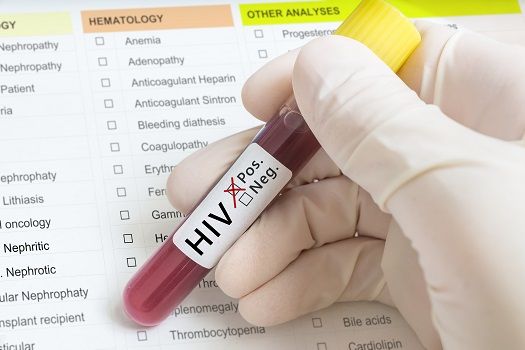Article
Switching Focus from HIV Prevention to Viral Suppression
Author(s):
Researchers at the National Institutes of Health (NIH) continue their reduction efforts in men who have sex with men (MSM) – a population that made up 67% of new HIV infections in 2014.

The proper human immunodeficiency virus (HIV) treatment for the right patient can lead to an undetectable viral load in the blood. This significantly reduces the risk of transmission — which is a necessary factor in order to slash infection rates. Researchers at the National Institutes of Health (NIH) continue their reduction efforts in men who have sex with men (MSM) – a population that made up 67% of new HIV infections in 2014.
Only 58% of American MSM with HIV achieved viral suppression in 2013. Part of this is attributed to the fact that only 57% of all MSM infected with HIV were receiving continuous care, according to the Centers for Disease Control and Prevention (CDC).
A large clinical study, HPTN 078, will assess an HIV prevention strategy. Funded by NIH’s National Institute of Allergy and Infectious Diseases (NIAID) and National Institute of Mental Health (NIMH), the study was announced at the HIV Research for Prevention (HIVR4P) in Chicago, Illinois.
“Developing and validating strategies to enhance the engagement of men who have sex with men living with HIV in care and treatment is essential for controlling the HIV epidemic in this critical population in the United States,” NIAID Director Anthony S. Fauci, MD, said in a news release.
Many HIV-related studies focus on prevention — which is absolutely essential to counteract the epidemic – but the HPTN 078 trial will focus on viral suppression. Data shows that 30% of MSM in Baltimore were infected with HIV in 2014 – of which, only 37% reached viral suppression. The NIH statement explained that viral suppression would have to increase by 10 percentage points within five years in order to reduce 20% of new infections within five years.
The researchers are looking for MSM without viral suppression who are at least 16 years old. They are taking participants from areas with high HIV burden — Baltimore, Maryland; Atlanta, Georgia; Birmingham, Alabama; and Boston, Massachusetts. Since this is a specific group, a new recruitment strategy is being used. The peer-to-peer method allows participants to refer other MSM and the hope is to gather 2,700 patients.
Once enough participants are enrolled, they will be randomly assigned to the case management intervention group or standard care group. Those in the first group will work with a trained case manager in order to be pointed in the right direction with adherence to antiretroviral treatment (ART). These patients can also receive text, phone, and email reminders about their treatment and physician appointments if they choose. However, the standard care group won’t be offered a case manager or extras. Results will be assessed after two years.
“Turning the tide on HIV will require a combination of evidence-based approaches,” said Dianne Rausch, PhD, director of the Division of AIDS Research at NIMH. “We anticipate that the HPTN 078 study will provide important data to advance the evidence base on how to strengthen viral suppression in this community to save lives and prevent HIV infections.”
Related Coverage:
HIV Hides in Brain, Kidney Tissue Even When Undetectable in Blood
Vaginal Ring Lowers HIV Risk Without Interfering with Sexual Intercourse
Study Gets to the Nitty-Gritty of HIV, Tuberculosis Coinfection
2 Commerce Drive
Cranbury, NJ 08512
All rights reserved.





